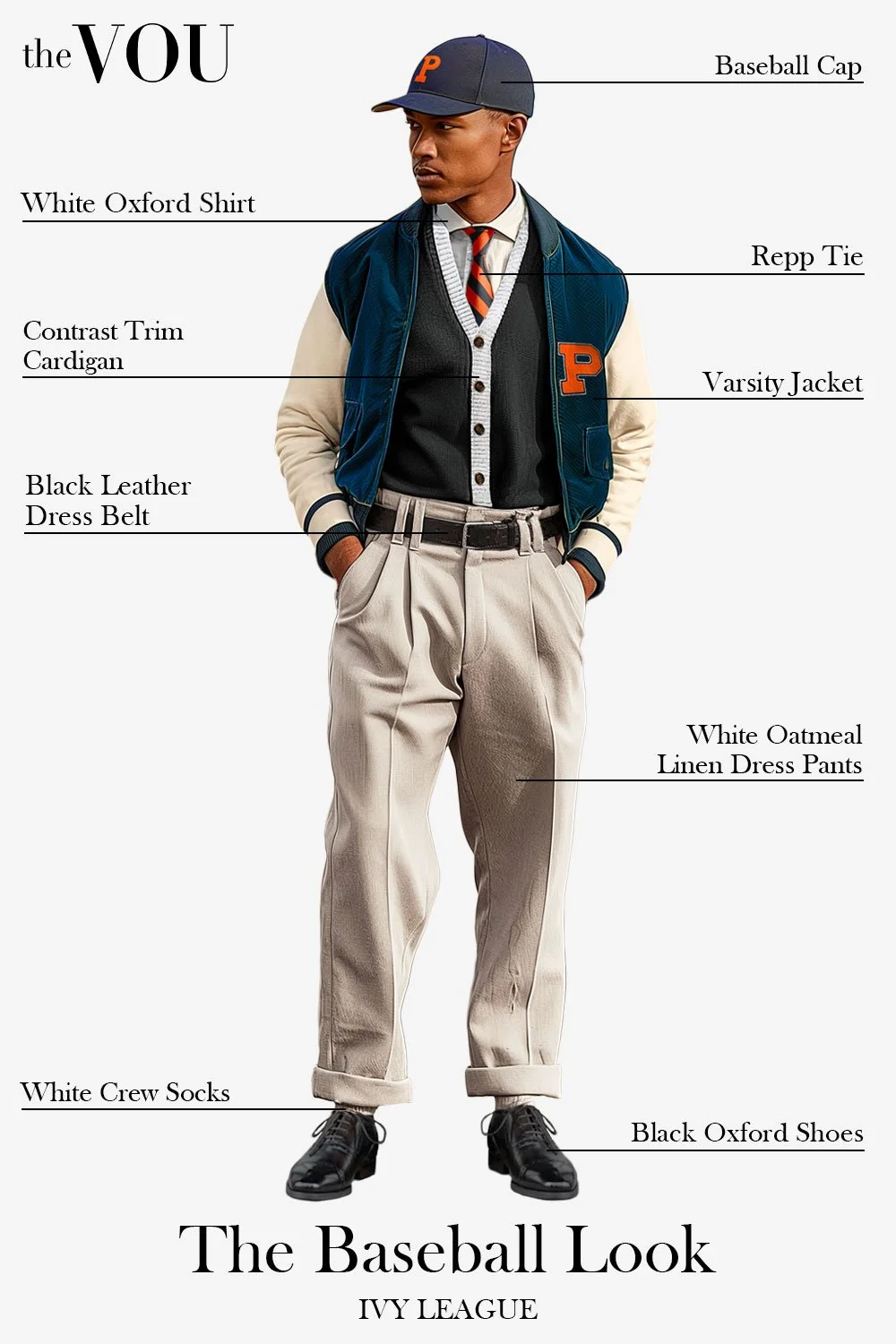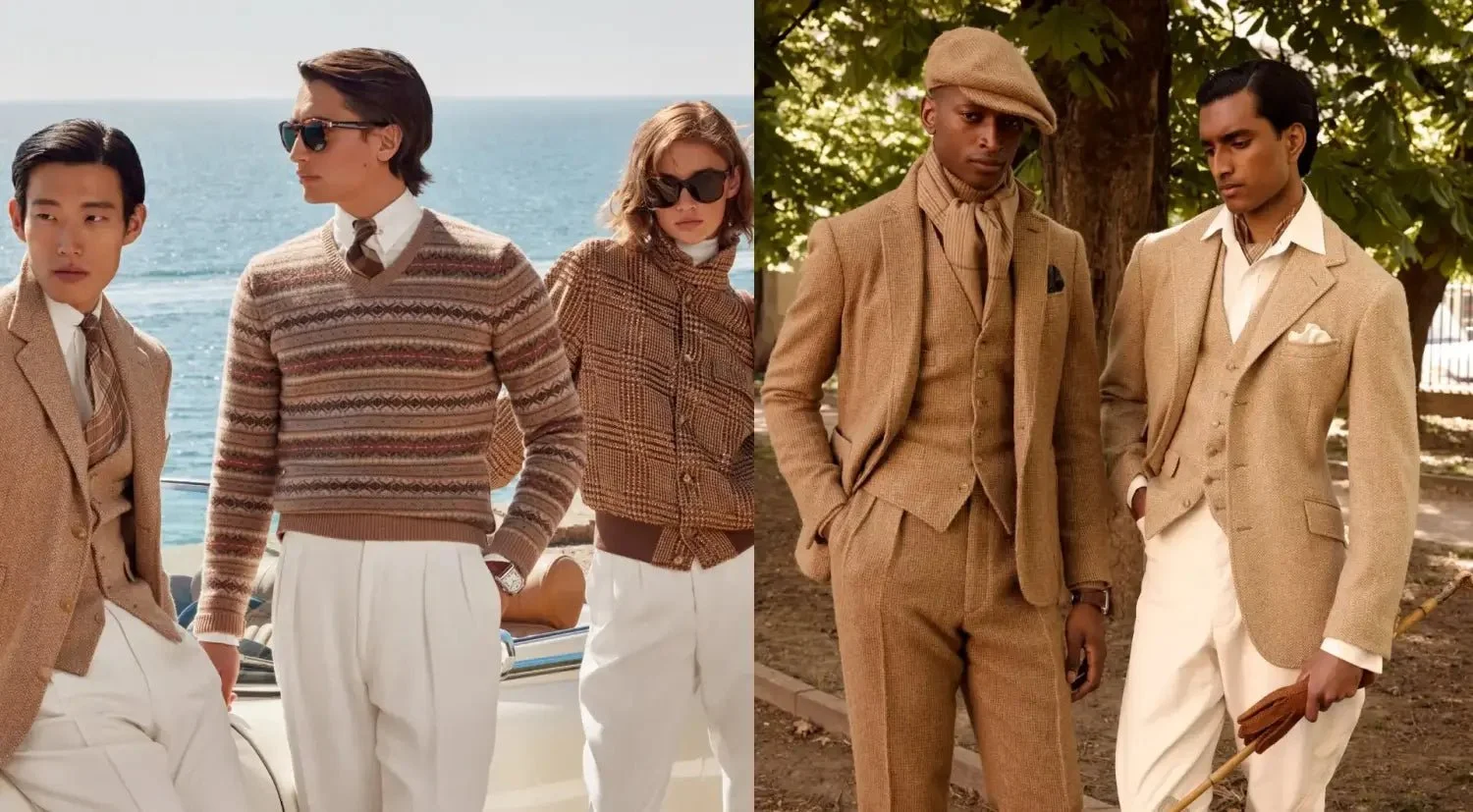A Revival of “Ivy League style” at the Ivy League
“Ivy League style” – named because it is said to have originated on Ivy League campuses – was a style of dress popular in the United States’ Northeast during the 1950s. Developing from the ‘20s through the ‘40s and becoming mainstream in the ‘50s, Ivy League style reflected a sophisticated but approachable take on academic fashion, placing heavy emphasis on items like button-down shirts, chino pants, and loafers; another hallmark of this style was the incorporation into everyday outfits of clothing items typically reserved solely for sports, like tennis or golf. Over time, Ivy League style became synonymous with preppy culture and the polished look of the “American elite.”
Courtesy of The VOU
While Ivy League style underwent a major decline in popularity in the ‘60s, being replaced by fashion informed by the peacock revolution and hippie counterculture, interestingly, when looking around Penn’s campus, or any college campus, really, one can see the modern revival of Ivy League style. Now referred to as “Old Money Aesthetic,” a term which emphasizes an idealized version of the understated elegance and wealth sometimes associated with upper-class America, the contemporary take on this more than seventy-year-old style has exploded in popularity through social media platforms like TikTok and Instagram. Using these platforms, content creators promote these classic looks, highlighting brands like Polo Ralph Lauren and Brooks Brothers, which romanticize a luxurious, curated lifestyle that appears effortless
Courtesy of MENSWEARR.com
Another factor in the resurgence of this look may be its alignment with today’s sustainability movement, as it markets the idea of investing in timeless, quality pieces instead of engaging in fast fashion. Regardless of the reason for its revival, this modern take on Ivy League style, which merges old-world refinement with modern fashion sensibilities, has made it fairly common as a Penn student to witness peers walking down Locust Walk wearing the cardigans, boat shoes, and polo shirts so reminiscent of what Penn students must have been wearing during the Eisenhower administration. Who knows how fashion will shift from here but the current vogue of the Old Money Aesthetic certainly serves as a reminder of the cyclical nature of trends and leaves lingering questions; how do we, as students, feel about becoming too comfortable with the fervent glamorization of extreme wealth and the possibly inherent implications of whiteness that might accompany the aesthetics of “Old Money?”
Featured Image Courtesy of The VOU


